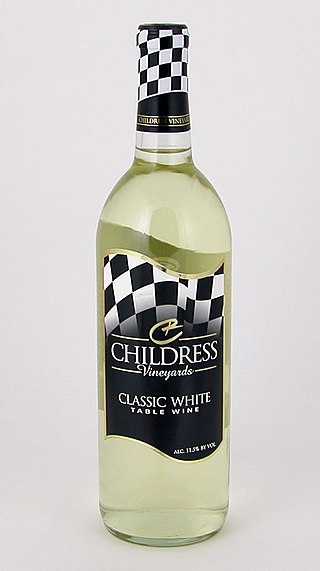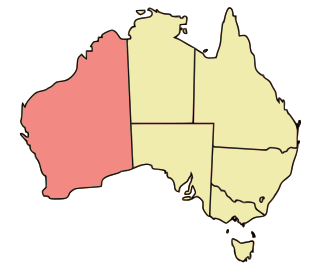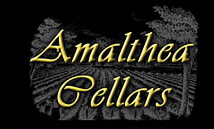
The Alexander Valley is a Californian American Viticultural Area (AVA) just north of Healdsburg in Sonoma County. It is home to many wineries and vineyards, as well as the city of Cloverdale. It is the largest and most fully planted wine region in Sonoma. Highway 101 runs through the valley, and the Russian River flows down the valley, surrounded by vineyards on both sides. From the higher elevations of the valley rim, there is a view as far south as Taylor Mountain and Sonoma Mountain. The region was named for Cyrus Alexander, owner of a part of the Rancho Sotoyome Mexican land grant, in 1847. Granted AVA status in 1984, the boundaries of the appellation are defined in the Code of Federal Regulations, Title 27, Section 9.53.

Ridge Vineyards is a California winery specializing in Cabernet Sauvignon, Zinfandel, and Chardonnay wines. Ridge produces wine at two winery locations in northern California. The original winery facilities are located at an elevation of 2,300 feet on Monte Bello Ridge in unincorporated Santa Clara County in the Santa Cruz Mountains AVA, south of Los Altos, California and west of Cupertino, California. The other Ridge winery facilities are at Lytton Springs in the Dry Creek Valley AVA of Sonoma County. Ridge Vineyard's 1971 Monte Bello Cabernet Sauvignon gained prominence for its fifth-place finish in the 1976 "Judgment of Paris" wine tasting.

New Zealand wine is produced in several of its distinct winegrowing regions. As an island country in the South Pacific Ocean, New Zealand has a largely maritime climate, although its elongated geography produces considerable regional variation from north to south. Like many other New World wines, New Zealand wine is usually produced and labelled as single varietal wines, or if blended, winemakers list the varietal components on the label. New Zealand is best known for its Marlborough Sauvignon Blanc, and more recently its dense, concentrated Pinot Noir from Marlborough, Martinborough and Central Otago.

Washington wine is a wine produced from grape varieties grown in the U.S. state of Washington. Washington ranks second in the United States in the production of wine. By 2017, the state had over 55,000 acres (220 km2) of vineyards, a harvest of 229,000 short tons (208,000 t) of grapes, and exports going to over 40 countries around the world from the 940+ wineries located in the state. While there are some viticultural activities in the cooler, wetter western half of the state, the majority (99.9%) of wine grape production takes place in the shrub-steppe eastern half. The rain shadow of the Cascade Range leaves the Columbia River Basin with around 8 inches (200 mm) of annual rain fall, making irrigation and water rights of paramount interest to the Washington wine industry. Viticulture in the state is also influenced by long sunlight hours and consistent temperatures.
The state of Oregon in the United States has established an international reputation for its production of wine, ranking fourth in the country behind California, Washington, and New York. Oregon has several different growing regions within the state's borders that are well-suited to the cultivation of grapes; additional regions straddle the border between Oregon and the states of Washington and Idaho. Wine making dates back to pioneer times in the 1840s, with commercial production beginning in the 1960s.
Napa Valley is an American Viticultural Area (AVA) located in Napa County in California's Wine Country. It was established by the Bureau of Alcohol, Tobacco and Firearms (ATF) on January 27, 1981. Napa Valley is considered one of the premier wine regions in the world. Records of commercial wine production in the region date back to the nineteenth century, but premium wine production dates back only to the 1960s.

Childress Vineyards is a winery in Lexington, North Carolina owned by NASCAR Cup Series championship team owner Richard Childress. The connection between NASCAR and fine wine is reflected in the labeling of some of the wines produced by Childress, featuring a checkered flag motif.

Namibian wine is produced in small quantities by a few wineries. Although the production of wine is expanding in Namibia, the grapes grown in the country are mostly destined for use as table grapes for export to Europe rather than for wine. One of the challenges of viticulture in Namibia is that the country is quite dry, which means that irrigation is usually necessary. Unlike its southern neighbour, South Africa, it is also situated closer to the equator than the traditional "30 to 50 degrees latitude" rule of thumb of areas suitable for wine production.

Texas has a long history of wine production. The sunny and dry climate of the major winemaking regions in the state have drawn comparison to Portuguese wines, in addition to other regions in Europe like Spain, France, and Italy. Some of the earliest recorded Texas wines were produced by Spanish missionaries in the 1650s near El Paso. Texas ranked as the fifth largest wine producing state by 2019.

J. Lohr Vineyards & Wines is a winemaking company headquartered in San Jose, California, with over 4,000 acres of estate vineyards in the Paso Robles AVA in San Luis Obispo County, Arroyo Seco and Santa Lucia Highlands AVAs in Monterey County, and the St. Helena AVA in Napa Valley, California. The family-owned and operated company was founded by Jerry Lohr in 1974. The company operates wineries in San Jose, Paso Robles, and Greenfield, California. In 2013, Steve Lohr was appointed CEO of the company. J. Lohr Vineyards & Wines’ product portfolio includes eight tiers of wine: J. Lohr Signature, J. Lohr Cuvée Series, J. Lohr Vineyard Series, J. Lohr Gesture, J. Lohr Pure Paso Proprietary Red Wine, J. Lohr Monterey Roots, J. Lohr Estates and ARIEL Vineyards. The portfolio also includes specialty brands Cypress Vineyards and Painter Bridge. J. Lohr ranks among the top 25 wine producers in the United States, with annual US sales exceeding 1.8 million cases.

Sonoma County wine is wine made in Sonoma County, California, in the United States.

California wine production has a rich viticulture history since 1680 when Spanish Jesuit missionaries planted Vitis vinifera vines native to the Mediterranean region in their established missions to produce wine for religious services. In the 1770s, Spanish missionaries continued the practice under the direction of the Father Junípero Serra who planted California's first vineyard at Mission San Juan Capistrano.

Nova Scotia wine is Canadian wine produced in the Canadian province of Nova Scotia. Nova Scotia's wineries are primarily organized under the Wine Association of Nova Scotia, though not all wineries are members. The industry began in the late 1970s with the original Grand Pré Winery in the Annapolis Valley of Nova Scotia.

Western Australian wine refers to wine produced in Australia's largest state, Western Australia. Although the state extends across the western third of the continent, its wine regions are almost entirely situated in the cooler climate of its south-western tip. Western Australia produces less than 5% of the country's wine output, but in quality terms it is very much near the top, winning 30 percent of the country's medals.

Champoux Vineyard is a grape growing estate located in the Horse Heaven Hills AVA of Washington state. Grapes grown in the vineyard have been used to produce some of the most critically acclaimed Washington wines with the name Champoux regularly being featured on vineyard designated wines. Paul Gregutt, wine writer for the Seattle Times and Wine Enthusiast, list Champoux as one of the "top ten" vineyards in the entire state. Cabernet Sauvignon grapes from Champoux vineyards were featured in the consecutive 100 point Robert Parker rated wines from Quilceda Creek Vintners for the 2002 and 2003 vintages.

The Barossa Valley wine region is one of Australia's oldest and most premier wine regions. Located in South Australia, the Barossa Valley is about 56 km northeast of the city of Adelaide. Unlike most of Australia whose wine industry was heavily influenced by the British, the wine industry of the Barossa Valley was founded by German settlers fleeing persecution from the Prussian province of Silesia. The warm continental climate of the region promoted the production of very ripe grapes that was the linchpin of the early Australian fortified wine industry. As the modern Australian wine industry shifted towards red table wines in the mid-20th century, the Barossa Valley fell out of favor due to its reputation for being largely a Syrah from producers whose grapes were destined for blending. During this period the name "Barossa Valley" rarely appeared on wine labels. In the 1980s, the emergence of several boutique families specializing in old vine Shiraz wines began to capture international attention for the distinctive style of Barossa Shiraz, a full bodied red wine with rich chocolate and spice notes. This led to a renaissance in the Barossa Valley which catapulted the region to the forefront of the Australian wine industry.

Breaux Vineyards is a Cajun owned and operated winery and vineyard located in Purcellville, Loudoun County, Virginia. Founded by E. Paul Breaux, Jr. in 1997, the 100% estate grown winery was one of three United States wineries to be named in the book "250 Best Wines 2012" by Oz Clarke for their Viognier, which landed at #87 in the publication. Breaux Vineyards is one of Virginia's largest grape growers & suppliers of wine grapes, bulk juice, and bulk wine to other East Coast U.S. wineries. The company logo is a red Crawfish, which pays homage to the Breaux family's Cajun heritage because they are often used in the local Cajun cuisine in Louisiana.

Amalthea Cellars is a winery in the West Atco section of Winslow in Camden County, New Jersey. The vineyard was first planted in 1976, and opened to the public in 1981. Amalthea has 10 acres of grapes under cultivation, and produces 5,000 cases of wine per year. The winery is named after Amalthea, a moon of Jupiter, reflecting the owner's scientific background and love of mythology.

Coda Rossa Winery is a winery in the Franklinville section of Franklin Township in Gloucester County, New Jersey, United States. The vineyard was first planted in 2002. The current owners obtained the property and winery in 2021, and previously Coda Rossa opened to the public in 2010. Coda Rossa has 10 acres of grapes under cultivation, and produces 1,500 cases of wine per year. The winery is named for the Italian words coda rossa which mean "red tail," because of the red-tailed hawks that live near the farm.

Hawk Haven Vineyard & Winery is a winery in Rio Grande section of Lower Township in Cape May County, New Jersey. A family dairy and produce farm since 1940, the vineyard was first planted in 1997, beginning with Cabernet Sauvignon. The winery opened their doors to the public in 2009 with their first vintage in 2007, which consisted of the American Kestrel White, Red Table Wine, Merlot, and Cabernet Sauvignon. Today, Hawk Haven has 16 acres of grapes under cultivation, and produces 5,000 cases of wine per year. The winery is named for the large number of hawks that migrate to the farm every year. They currently have sixteen different varietals and all of the grapes are harvested, pressed, fermented, aged, blended, and bottled on site.




















